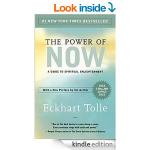You know that you have OCD when you make 8 edits after already posting your blog. Yep, that’s me. Some people call it perfectionism, but that’s not what I would call it. See, my need for perfectionism died at a young age due to my impulsive sloppiness. I learned long ago to accept that “my perfect” was simply doing my best. So, why the ridiculous amount of edits?
I love writing, truly and irreversibly. Sometimes, though, when I’m overwhelmed by emotions, what I’m trying to say doesn’t come out correctly. Overwhelming emotions garble it. I feel like I’m cranking out the words and the sentences, but the flow is forced, nothing organic, flat at best- the kiss of death for a writer.
Not sure how many of you noticed, but I had made a slew of edits after posting my last blog, “White Flag” (#7). From the get go, it had been a difficult blog to write because of its incredible vulnerability. At first, frustration had blocked every flow of thought- Important to note that this isn’t exclusive to OCD; it can happen to anyone; even has its own cliché, “cat got your tongue.” However, when you add my anxiety disorder into the mix, the frustration doesn’t lessen as it’s meant to. Instead, it feeds on itself becoming a self-perpetuating cycle. Learning to work during such an emotional state has been my greatest challenge as a writer and even more than that, as a person.
OCD and actually most anxiety disorders are not a one size fits all. Of course, there are underlying similarities, but most people have their own unique challenges. For example, I don’t have the neat and tidy OCD, where everything is organized. I rarely rely on lists and I, most certainly, am not a germaphobe.
My worst self, OCD related, happens when a thought gets trapped inside of my mind and gathers energy; it goes from innocuous into an emotional outburst in 60 seconds or less. I feel like a teapot spitting, whistling, bouncing to and fro, ready to explode. I call them “my fits.” Clearly, this behavior is not professional and definitely, the ugliest skeleton in my closet.
I needed to remedy this ridiculous behavior because let’s be real, after 8 years old, tempertantrums were frowned upon. I simply didn’t know how. That was until a friend of mine loaned me Eckhart Tolle’s audiobook, The Power of Now. I began to listen to the first CD and was hooked. What I noticed was that almost 100% of my thoughts had nothing to do with what was happening right at this moment. Apparently, my fits were based on future or past thoughts, but had no foothold in the present tense. I could recognize the light and this was the first step.
For decades, people suggested that I meditate. That meditation would greatly help my anxiety. Between you and me, I thought they were crazy if they thought I could stop the spinning. My brain ran a mile a minute and never turned off like meditative techniques suggest. That’s why I appreciated The Power of Now because instead of trying to silence my thoughts, I simply learned to redirect them into the here and now and believe it or not, I found peace this way.
Please understand that this wasn’t overnight. I’d listen to Tolle's CDs continuously for months on end before I was able to be in the present moment. It took another year before I ventured on my own without the CDs. Some people preferred silence, but little noises would easily distract me so I used soothing music like Enya. I’d put the headphones into my ears and drown out the world. It became my self-created sanctuary.
I tried to focus on the words within the songs but found myself interrupted by my thoughts quite often. Instead of doing the impossible of emptying my thoughts, I simply followed the trail of thought. I'd ask myself, “Why was I thinking about this?” For the most part, my thoughts were clamoring for attention because I needed to release them via forgiveness, mostly forgiving myself and my myriad of mistakes but also forgiving others who wronged me. When I stopped trying to “go blank” and accepted that these thoughts have a purpose, I was readily able to release them and free myself of their negative consequences.
There are arguments amongst Spiritualist about the proper placement of the body, sitting up or laying down. I’m not qualified to answer what is best for enlightenment; however, my personal preference is laying down, for one simple reason; it takes less thought than sitting up. I’d lay there and feel my body against the bed. I’d imagine a white light running up and down my spine. If thoughts intruded, I’d address them.
After a few years, I was able to redirect my thoughts into visualizations. I’d picture problems solved, people healed, and me, happy. Eventually, these visualizations have become my reality. Look, my meditation hasn’t cured my mother, nor has it stopped the Wars in the Middle East. But, it has given me peace despite the fact that these conditions, themselves, have no peace to offer. To me, that’s the accomplishment.
What’s more is that I haven’t had a full on fit in over 3 years. Granted, I still feel the momentum, but now, I’m able to bring myself down to a more emotionally centered state before it erupts. I’ll always have OCD. I’ll always struggle with anxiety, but thanks to meditation, I own a peace that I never thought could exist.
So, when I hit the wall while writing Blog #7, White Flags, I simply released the blog into cyberspace via posting despite its lackluster flow. I then meditated and returned to my piece. Feeling refreshed and revitalized, all of those words that were previously trapped on the tip of my tongue came tumbling out and this blog became one of my most heartfelt pieces to date.
Just as my disorder is not a one size fits all, I don’t think that meditation is this way either. Years later, my mind has yet to be "silent." Instead, it took opening myself up to my own uniqueness for me to find serenity. Keep in mind that everyone’s path is individuated and this is merely a story of my path to tranquility. In the end, it’s your mind, your peace; sculpt it to your needs.


